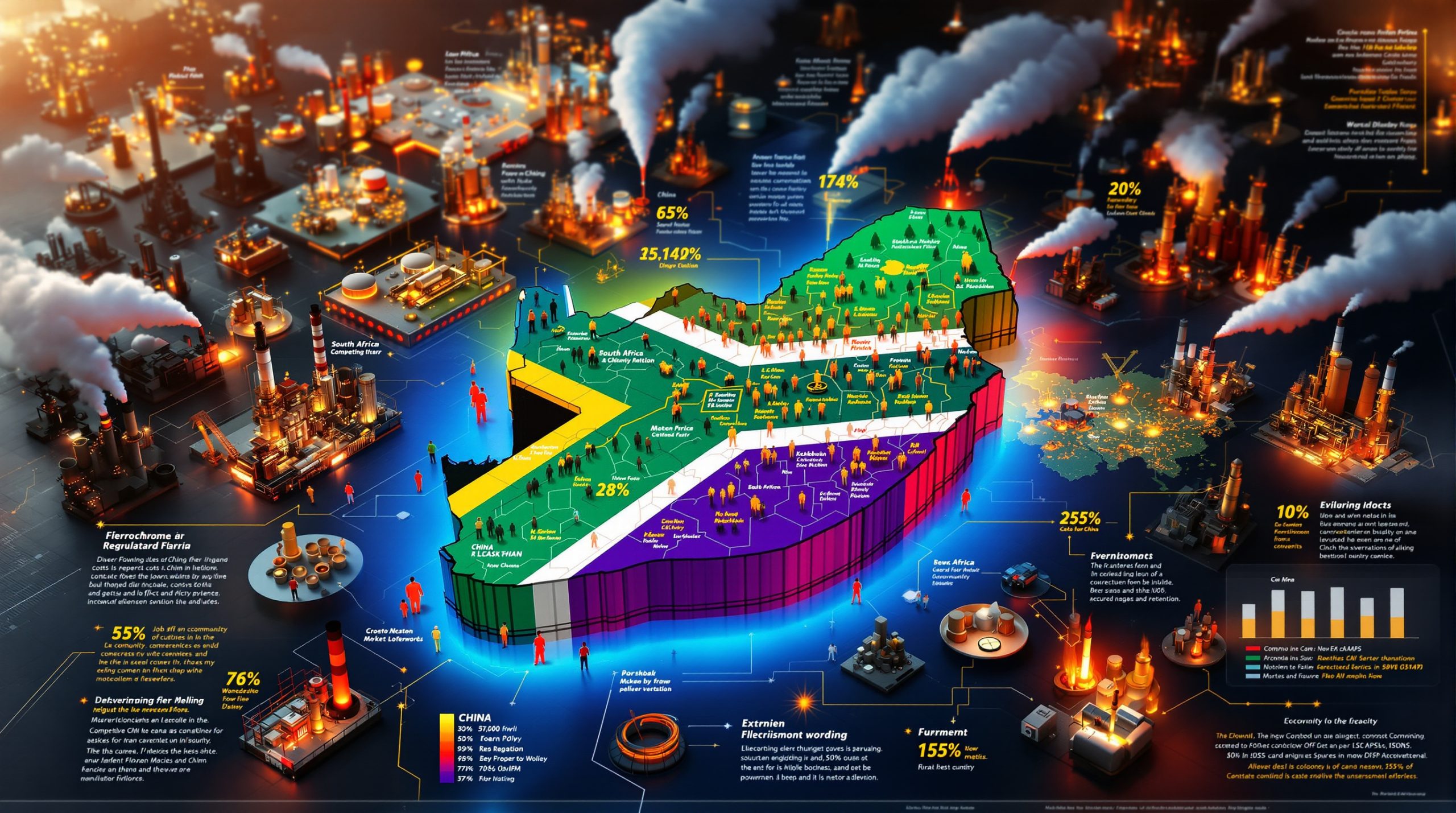Scenario Projections: Transformative Pathways in the Global Aluminium Market
Investor sentiment towards aluminium is currently dominated by uncertainty, driven by macroeconomic shifts and the search for new supply hubs. Projects like the Rusal Ethiopia aluminium smelter project emerge from scenario analysis rather than short-term news triggers. This analysis reflects long‐term market dynamics and strategic supply chain repositioning.
Investors seek opportunities as policymakers and industry leaders adjust their outlook. Furthermore, evolving global trade frameworks add complexity to market signals.
What Macro Forces Are Shaping the Project?
Assessing the Role of Global Supply Chain Realignment in Aluminium
The aftermath of the 2022 sanctions on Russian aluminium has unleashed a structural realignment of global trade flows. Restrictions on Russian exports have dismantled previously stable market relationships. Consequently, the need for diversified sources has increased.
Key trade shifts include:
- During January–September 2025, Russian aluminium exports to China hit 1.62 million tonnes, making up 82.6% of China’s total imports.
- EU quotas dropped from 275,000 tonnes to 50,000 tonnes for pre-2025 contracts, an 82% reduction year-on-year.
- The market premium for P1020A aluminium in Shanghai rose to $80–100/tonne in November 2025.
Moreover, updated aluminium scrap assessments have informed these decisions. In addition, shifting dynamics echo trends observed in us‑china trade war impacts, reinforcing the urgency to avoid single-market reliance.
How Do Ethiopian Infrastructure and Energy Trends Set the Stage?
A historic transformation in Ethiopia’s energy profile has spurred large-scale metallurgy. In September 2025, the Grand Ethiopian Renaissance Dam (GERD) achieved operational capacity by delivering 15,700 GWh/year. This shift positions Ethiopia as a renewable hydropower frontier.
Ethiopia’s unique energy situation includes:
- 96% of electricity generation via hydropower in 2023 (IEA).
- 87% of total energy usage in 2023 based on biofuels/waste, highlighting an ongoing transition.
Infrastructure readiness brings risks, as reliable megawatt-scale supply is critical for aluminium smelting processes. Furthermore, limited grid capacity may require supplementary power sources. Notably, the implications for energy transition & security remain central to the project’s long-term viability.
Why Is Ethiopia an Emerging Focal Point for Aluminium Production?
Evaluating Demand Dynamics: Domestic Growth and Import Substitution
Ethiopia’s ambitions extend beyond hosting a smelter. The nation seeks to capture domestic demand and reduce hard currency outflows incurred by aluminium imports. In addition, this strategy aligns with broader economic transformation goals.
Project aims and benefits include:
- Meeting rapid industrial growth.
- Reducing foreign exchange risk via import substitution.
- Positioning Ethiopia as a leader in Africa’s aluminium ecosystem.
Strategic Location Assessment for Export Orientation
Ethiopia’s logistics present inherent advantages. Its proximity to the Red Sea shipping lanes and major international corridors offers rapid access to markets in Asia, the Middle East, and Europe. Planned connectivity with the Indian Ocean–Middle East–Europe corridor further strengthens its export potential.
Scenario analyses indicate that as the project comes online, buyers in China, the Middle East, and India will be key targets. For instance, the lack of EU quotas and lower transport costs make Ethiopian capacity attractive. This development coincides with broader industry innovation trends, enhancing competitiveness.
Which Technical and Financial Milestones Define the Smelter Plan?
Project Timeline and Capacity in Context
The project envisions a multi-phase build marked by robust industry benchmarking. Initial plans underscore a commitment to measurable milestones.
Key specifications include:
- First Phase Capex: ~$1 billion
- Annual Production Capacity: 500,000 tonnes
- Project Timeline: 3–4 years (MoU to production)
- GERD Hydro Power Output: 15,700 GWh/year
Currently, site identification and feasibility studies are underway. Detailed engineering and project launch are anticipated within 12–18 months. In addition, comparisons with similar African smelters, like Mozambique’s Mozal, offer strategic insights.
Oversight, Feasibility, and Governance Structures
A joint Rusal-EIH technical committee is steering the project through its critical phases. The committee’s remit includes:
- Pre-feasibility and site evaluation.
- Detailed engineering and environmental/social assessments.
- Regulatory review and securing sovereign guarantees.
These measures are vital for mitigating delays. For further details on recent developments, see ethiopian aluminium deal. Moreover, this approach embodies current industry innovation trends within the sector.
What Are the Key Energy Supply Scenarios and Sustainability Debates?
Will Renewable Energy Make Ethiopian Aluminium “Green”?
The promise of hydro-powered aluminium production offers an opportunity for low-carbon branding. The utilisation of GERD’s output underpins a potential edge in the "green" market.
Debate drivers include:
- Certification challenges: Buyer recognition of “green” aluminium hinges on traceable renewable sourcing mechanisms, particularly under the EU’s CBAM framework.
- Supplementary power risks: Despite a hydro base, some analysts worry that the smelter may require gas backup, which could undermine its low-carbon credentials.
Analysts agree that robust verification systems are essential. In addition, industry players need to address certification challenges to realise full market potential.
Reliability and Competing Power Demands
Aluminium smelting is notably power-intensive. The planned smelter’s projected demand of 6,000–7,500 GWh/year may utilise up to half of GERD’s annual output.
Main concerns include:
- Whether grid expansion will match demand growth.
- The risk of incorporating dual-fuel or gas backup systems that could compromise sustainability narratives.
- Possible delays and cost increases if power reliability diminishes.
Such challenges underscore the need for proactive contingency planning. Investors remain cautious, monitoring both regulatory and infrastructural developments. Additionally, shifts in market volatility & hedging could further affect cost structures.
How Could This Project Alter Regional and Global Aluminium Markets?
Supply Chain and Price Implications
Ethiopia’s entrance signifies the first major African greenfield aluminium smelting capacity in a decade. The realignment of Russian flows from Europe to Asia intensifies this significance.
Impacts include:
- Shorter supply chains for Asia and the Middle East.
- Downward pressure on Asian premiums when supplies from Russia and Ethiopia intersect.
- An attractive, quota-free alternative for buyers diversifying from Russian sources.
This evolution could rebalance pricing structures significantly. In addition, strategies to mitigate disruptions via market volatility & hedging are being scrutinised.
Geopolitical Drivers and Barriers
Several factors shape the project’s international context:
- Sanctions and shrinking EU quotas necessitate new production bases.
- Regulatory challenges and carbon certification issues persist, especially for EU market access.
- Overdependence on Asian markets may expose the project to future geopolitical tensions.
These geopolitical dynamics underscore both the promise and the pitfalls of the initiative. Furthermore, they highlight the imperative for diversified export strategies and robust risk management.
What Are the Principal Risks and Uncertainties?
Infrastructure, Financing, and Regulatory Hurdles
The project faces several obstacles including:
- Incomplete technical feasibility studies and permitting.
- Financing challenges for a capex exceeding $1 billion amidst currency and economic volatility.
- Shifting regulatory landscapes that could derail construction timelines.
These risks require careful management and contingency planning. In addition, securing timely government support will be essential for on-budget delivery.
Market Acceptance and Certification Challenges
Key hurdles also derive from the certification process:
- Uncertainty over emission certification and eligibility for European green markets.
- Vulnerability due to reliance on a limited pool of Asian buyers.
- Potential shifts in demand if Chinese import policies change unexpectedly.
Investors should remain vigilant and monitor these risks as the project evolves.
FAQ: Addressing Common Investor and Industry Questions
What is the planned primary output and timeline?
- The target is 500,000 tonnes per year of primary aluminium.
- Initial production is expected within 3–4 years, with ~$1 billion in first-phase capex.
What powers the proposed smelter, and will it qualify as "green" aluminium?
- It is designed to run primarily on Ethiopian hydropower.
- However, there is ongoing debate over renewable certification, especially for EU markets.
Will new capacity impact global aluminium prices or trade patterns?
- Yes, the new capacity is expected to redirect supply flows and intensify competition in Asia.
- This may also contribute to a reduction in Asian aluminium premiums.
Statistical Snapshot: Key Project Metrics and Market Shifts
| Data Point | Value / Date |
|---|---|
| Smelter First Phase Capex | ~$1 billion |
| Annual Production Capacity | 500,000 tonnes |
| Project Timeline | 3–4 years |
| GERD Hydro Power Output | 15,700 GWh/year (2025) |
| Ethiopia 2023 Hydropower Share (Electricity) | 96% |
| Ethiopia 2023 Biofuel/Waste Share (Total) | 87% |
| Russian Aluminium to China (Jan–Sep 2025) | 1.62m tonnes (82.6%) |
| EU Russian Primary Aluminium Quota | 275,000 to 50,000 tonnes |
| Shanghai P1020A Premium (Nov 2025) | $80–100 per tonne |
Conclusion: Strategic Outlook for Ethiopia’s Aluminium Ambitions
Ethiopia’s bold step towards hosting the project could fundamentally alter African and global aluminium flows. Achieving success will depend on energy reliability, effective navigation of certification frameworks, and securing sustained financing. Investors and stakeholders are advised to monitor site studies, permitting progress, and final power agreements closely.
Analysts have noted that the Rusal Ethiopia aluminium smelter project is a landmark initiative in redefining regional resources. Furthermore, strategic evaluations confirm that the Rusal Ethiopia aluminium smelter project stands to reshape supply chains. In addition, emerging data suggests that strategic partnerships within the Rusal Ethiopia aluminium smelter project highlight unprecedented international collaboration. For further insights, refer to a market analysis report.
Ready to Capitalise on Emerging Aluminium Opportunities?
Discover how significant ASX mineral discoveries can transform your investment strategy with real-time alerts powered by Discovery Alert's proprietary Discovery IQ model. Visit our discoveries page to see how historical finds have reshaped the market and start your 30-day free trial today for a competitive edge.




